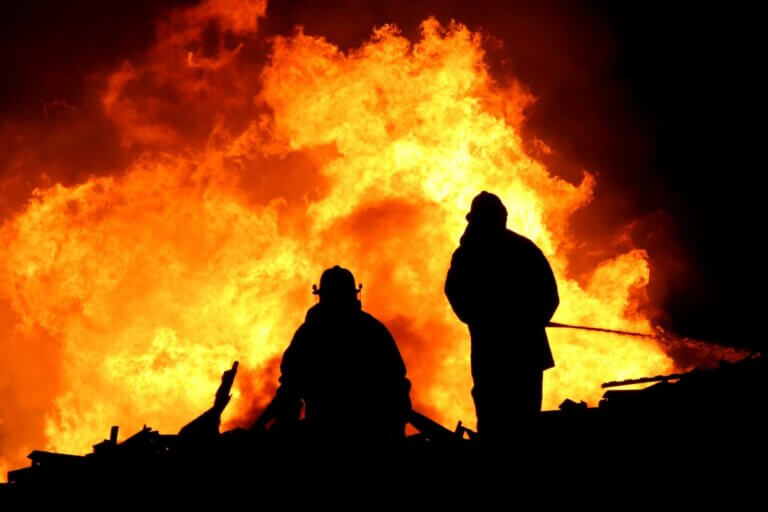The uncontrolled accumulation of combustible dust constitutes a latent risk for a large number of productive and industrial activities. In order to correctly face it we must apply a strict control policy, in addition to constant work to train personnel.
Permanently protecting the safety of workers inside and outside their work environment is one of the most important aspects that every company or organization must take into account, if it aspires to consolidate its successful and efficient performance.
To achieve this objective, it is important to consider all the risks that may arise in each of the industrial or productive activities of the economy. In particular, those that tend to go unnoticed enough to generate accidents with tragic or fatal consequences.
One of these high impact “careless hazards” is the excessive build-up of a highly flammable item known as “combustible dust”.
This situation, which for the vast majority of people is practically unknown, has been the cause of a high number of tragic accidents around the world, generally with serious consequences, both for the health of workers and for the surrounding infrastructure.
Just remember the last major accident reported in July 2015 in Bosley, Great Britain, where the explosion of a wood flour mill, belonging to the Bosley Wood lumber company, killed twelve workers and seriously injured another four.
Some of these hazardous particulate materials come from substances known to be flammable in nature such as wood, light metals, and various chemical elements, including saltpeter and sulfur, for example.
But they can also come from other, more unknown and unexpected sources, such as seemingly harmless agricultural products, including grain, spices and tobacco. Even the textile industry is also prone to these types of accidents, as happened in the Harbin factory in China, on March 17, 1987, when the sudden detonation of flax dust accumulated in the environment killed 58 workers, and caused severe burns to 177 others.
What is combustible dust?
Technically, combustible dust, also known as explosive dust, is composed of fine particulate material that arises as a by-product of those manufacturing processes where combustible raw materials are used.
These particles can create a risk of explosion when they are suspended in the air, in certain concentrations and under specific conditions to promote sudden combustion. For this to occur, we only need one source of ignition, which can often be unintentional. For example, the spark generated by the friction between two seemingly harmless metal surfaces such as scissors and a work table.
If the concentration of dust present is very high, the resulting explosion, in the event of a sudden combustion, is usually catastrophic and usually causes destruction of property and very serious injury, or even death, to those in the vicinity.
In fact, it is most likely that the explosion will not be limited to the environment or area closest to the ignition point, but will spread to the rest of the company’s facilities, also affecting any other home or surrounding infrastructure.
This happened, for example, in August 1997 in France, when the explosion of a grain warehouse at the Société d’Exploitation Maritime Blayaise killed instantly 11 administrative officials, and injured another four who were at the time in a building close to the point of detonation.
These collateral damage occurs because the initial blast wave generally expands violently outside the confined space where the deflagration was generated, which also displaces or agitates the decanted combustible dust in to other facilities.
As a result, more dust will mix with the oxygen in the air, causing a second, third, or even fourth explosion. Everything will depend on the amount of combustible material accumulated in the environment.
Some of these explosions can even occur inside other machines or containers, as the pressure wave and fire can spread through the ventilation duct system. It is precisely at that moment, when the risk to people’s lives increases exponentially, as well as the possibility that a large amount of infrastructure and equipment, or even entire buildings, will be destroyed.
Some examples of industrial processes that typically generate combustible dust are crushing, grinding, cutting, milling, polishing, and sawing. In fact, modern 3D printing jobs can also generate combustible dust, especially if we use resins or polymers in combination with other flammable products.
How to face and prevent this risk?
As we have seen, combustible dust is a latent hazard that routinely affects a wide variety of industries and work environments. However, one of the factors that most increases the risk of suffering accidents with fatal consequences is that, in most cases, both employers and workers were unaware of the existence of an imminent danger.
This happened, for example, in Port Wentworth, Georgia, United States, on February 7, 2008, when the detonation of sugar dust inside the warehouses of the Imperial Sugar company killed 14 workers and injured 42 others.
The risk of ignorance grows exponentially because combustible dust particles are practically invisible to the human eye. This favors their accumulation in environments where they cannot be detected with the naked eye.
This implies, consequently, that companies must take permanent measures in order to maintain the safety of their workers, as well as the integrity of their facilities.
One of the most important and obvious preventive actions is to design, implement and apply cleaning routines clearly established within the internal regulations.
These measures must also be known to all personnel, both operational and managerial. For this purpose, it is advisable to carry out talks and permanent training in all activities that carry the risk of suffering this type of accident.
Similarly, it is critical to ensure that all personnel have work equipment, such as clothing or tools, properly prepared to avoid the risk of ignition in high-risk environments. This implies applying measures as simple as, for example, not smoking, wearing suits without metal buckles and wearing shoes with rubber soles, among other options.
In the same way, to avoid the dangers caused by the excessive accumulation of combustible dust, both in closed spaces and inside machines and infrastructure, dust collectors, special filters and air control systems programmed to issue immediate alerts must be used, in case any concentration higher than normal is detected.
Likewise, it is possible to use digital checklists that establish previous parameters of control of environments, from which we can carry out a constant inspection process regarding the minimum and maximum levels of dust concentrations that must be in a place. According to the characteristics of the work carried out by the company.
Download the DataScope app and start now!
DataScope is the ideal tool to eliminate paper use, save time, and efficiently collect data from the field. It allows companies to streamline, organize and evaluate field work thanks to its online forms, which provide indicators in real time, 100% adaptable to any area.
With DataScope, your team can answer custom mobile forms from their phones or tablets, online or offline, through the app.







